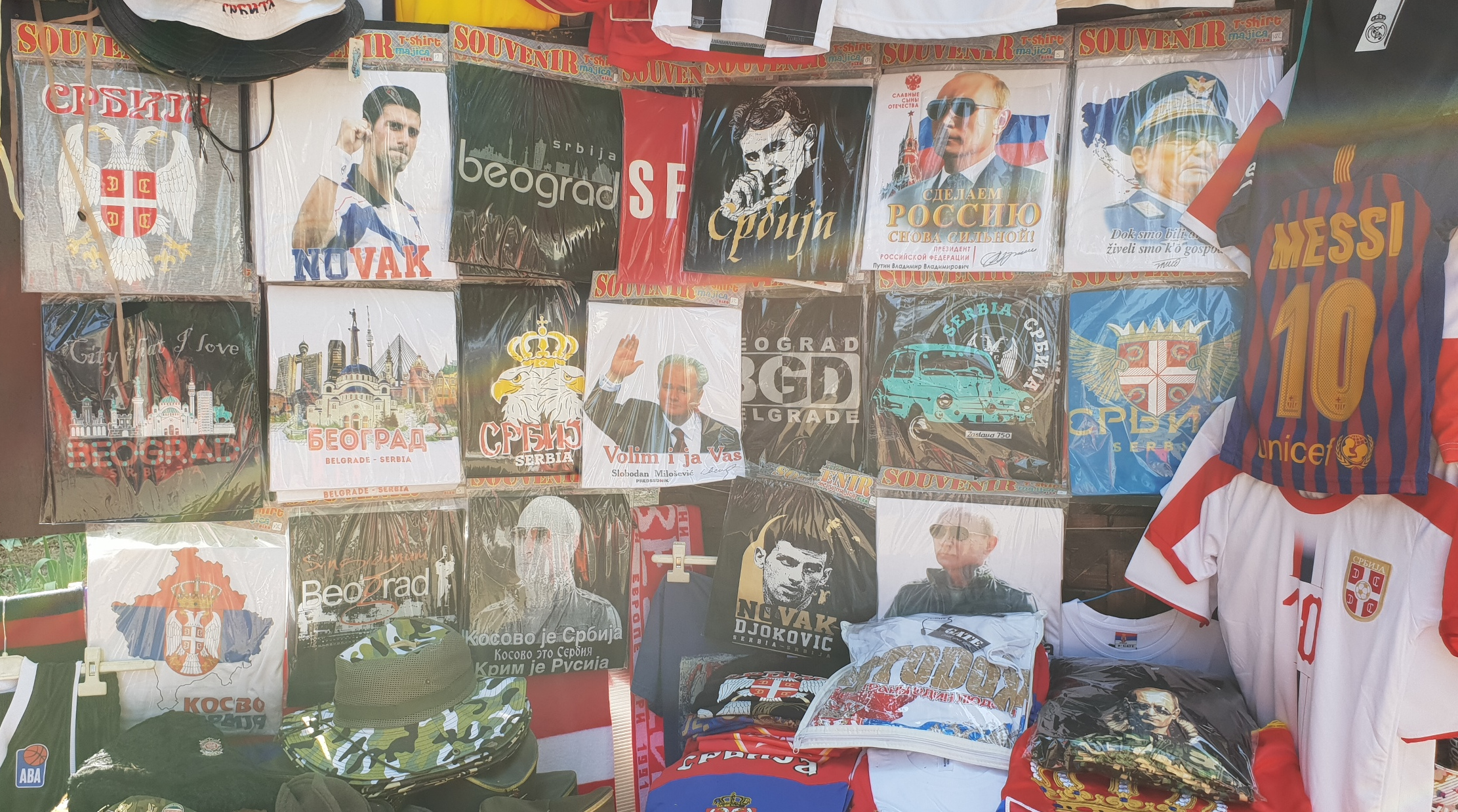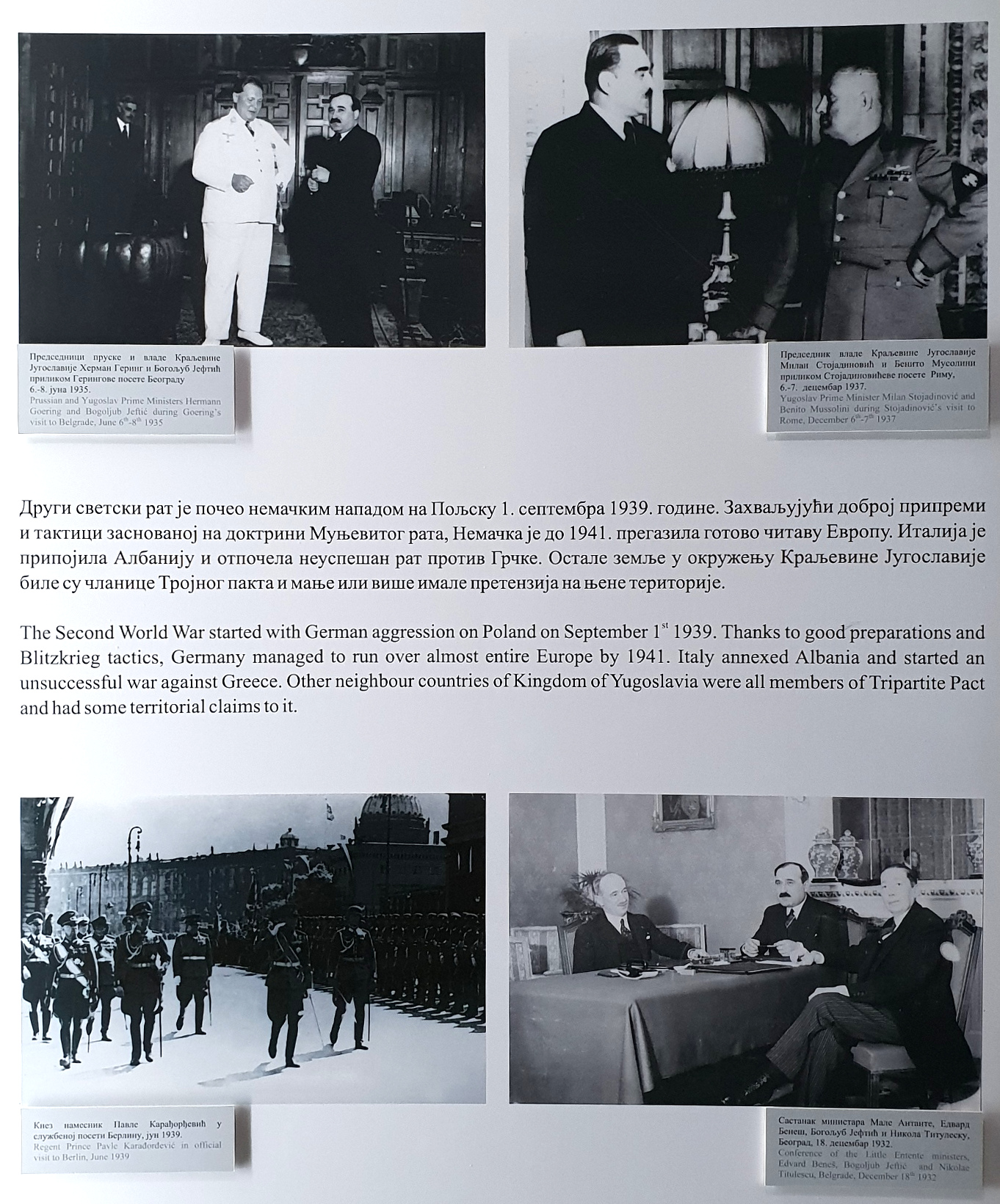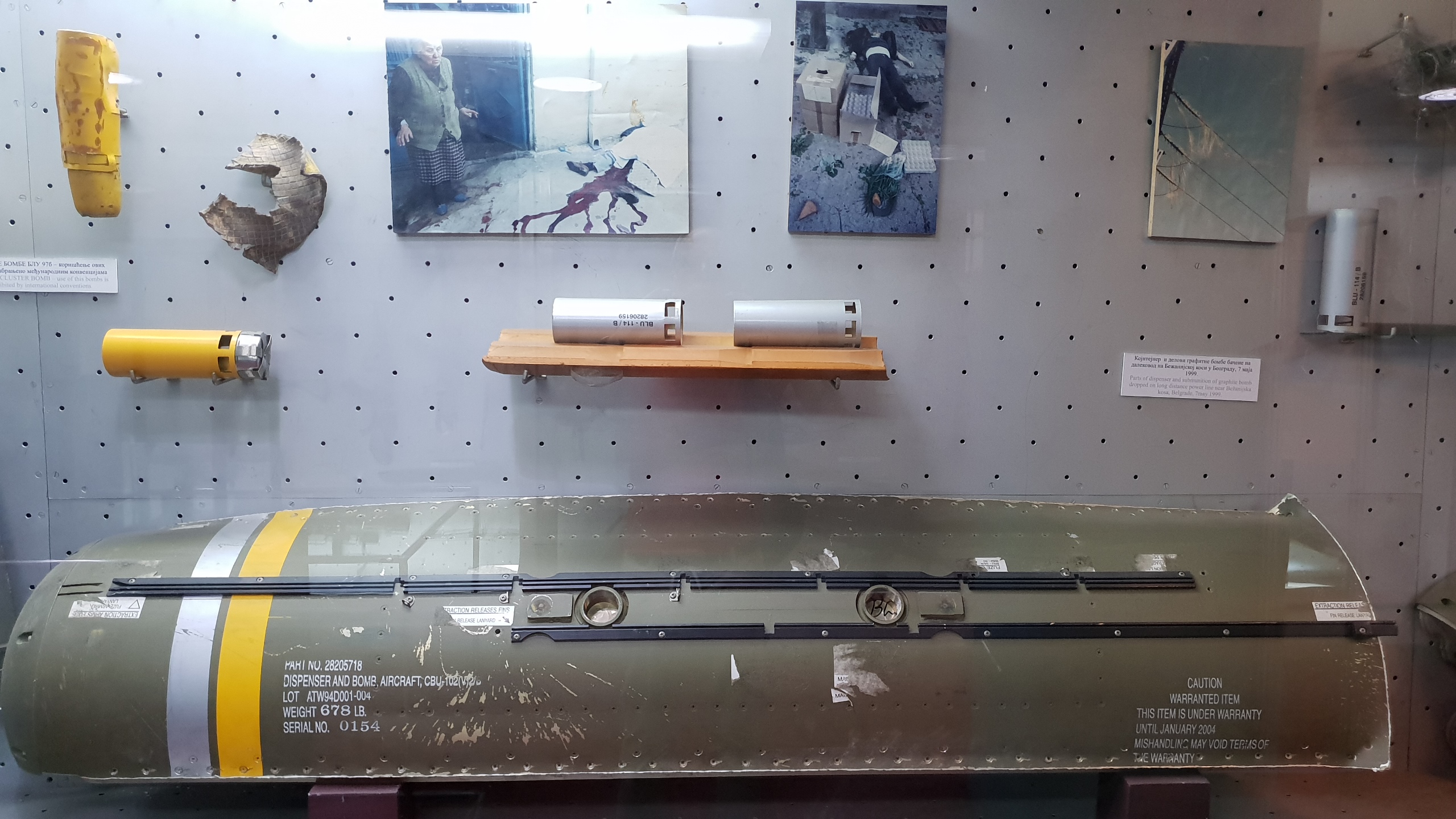 On the walkway in the park on my way to the fortress where the Military Museum is located there are numerous kiosks selling souvenirs. At the first one I saw I was surprised and amused to see so many different items with Putin. The vendor noticed my reaction and looked at me questioningly. I pointed to a shirt and said „Putin“ in explanation. „Yes, Putin. He is the president of Russia,“ came the helpful clarification. It dawned on me that here also was Milošević and unlike Berlin, where hipster tourists buy t-shirts with Putin, Krushchev, Gorbachev, Honecker, Reagan etc. to wear with amusement, there is absolutely no irony intended.
On the walkway in the park on my way to the fortress where the Military Museum is located there are numerous kiosks selling souvenirs. At the first one I saw I was surprised and amused to see so many different items with Putin. The vendor noticed my reaction and looked at me questioningly. I pointed to a shirt and said „Putin“ in explanation. „Yes, Putin. He is the president of Russia,“ came the helpful clarification. It dawned on me that here also was Milošević and unlike Berlin, where hipster tourists buy t-shirts with Putin, Krushchev, Gorbachev, Honecker, Reagan etc. to wear with amusement, there is absolutely no irony intended.

 This was a perspective on WW II which I had only read of, and had not encountered before. It was all pretty interesting. There was repeated reference to Croatian, German, and Hungarian atrocities, but no engagement of Serbian crimes. Really interesting nuances in the language used for the monarchy and partisans. Here Alexander was killed by „Croatian terroristic groups“. Tito figures in, but is almost depoliticized. The treatment was very, very different from the Museum of Yugoslavia.
This was a perspective on WW II which I had only read of, and had not encountered before. It was all pretty interesting. There was repeated reference to Croatian, German, and Hungarian atrocities, but no engagement of Serbian crimes. Really interesting nuances in the language used for the monarchy and partisans. Here Alexander was killed by „Croatian terroristic groups“. Tito figures in, but is almost depoliticized. The treatment was very, very different from the Museum of Yugoslavia.
I was alone in the galleries save for a 20-something couple, an American woman and a Chinese-Australian man. I found the Serbian slant so interesting, and so different from the analysis and insight at both Tito’s mausoleum and the old Museum of Yugoslavia this morning that I asked the two their take. I got non-commital „it’s really interesting to see something different than the American story“.
 I carefully read everything in the UN display to be sure I wasn’t missing something. Yugoslavia took part in UN actions before the state collapsed. Then there’s a gap, after which Serbia takes part in UN actions. There’s no mention of the UN in the Balkans, except in the description of NATO as not bombing under UN auspices.
I carefully read everything in the UN display to be sure I wasn’t missing something. Yugoslavia took part in UN actions before the state collapsed. Then there’s a gap, after which Serbia takes part in UN actions. There’s no mention of the UN in the Balkans, except in the description of NATO as not bombing under UN auspices.
 Display on the cluster bombing of Niš.
Display on the cluster bombing of Niš.
